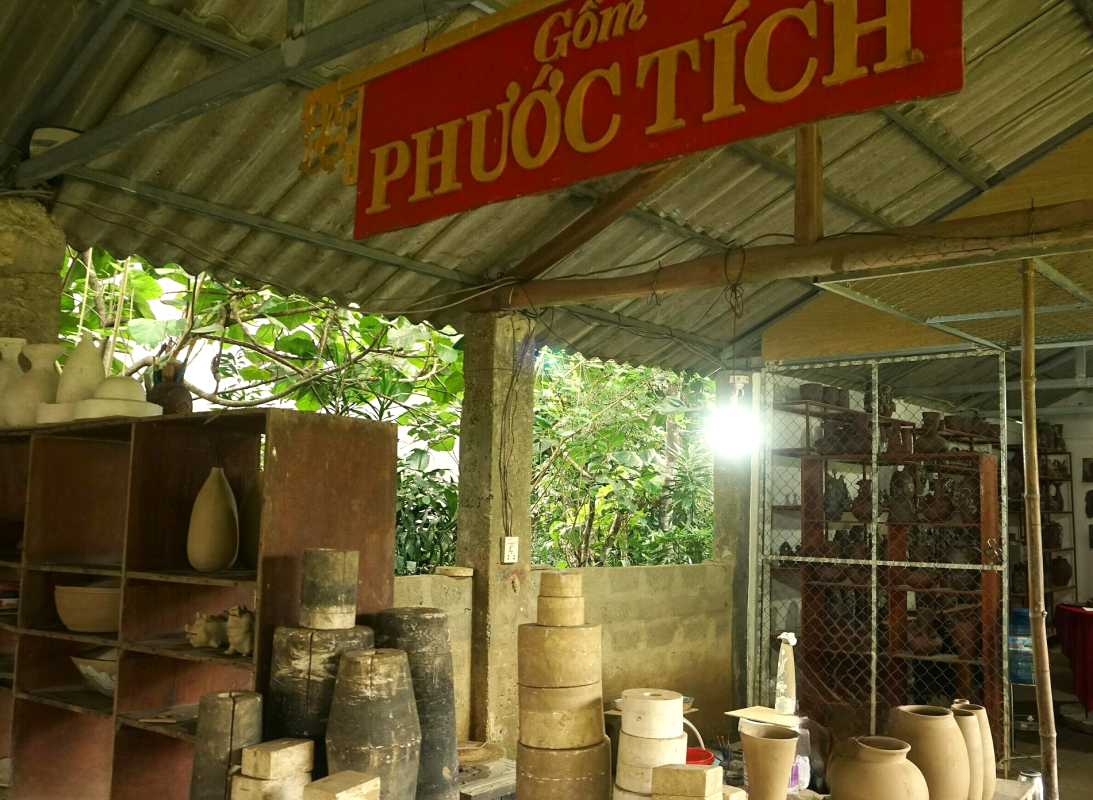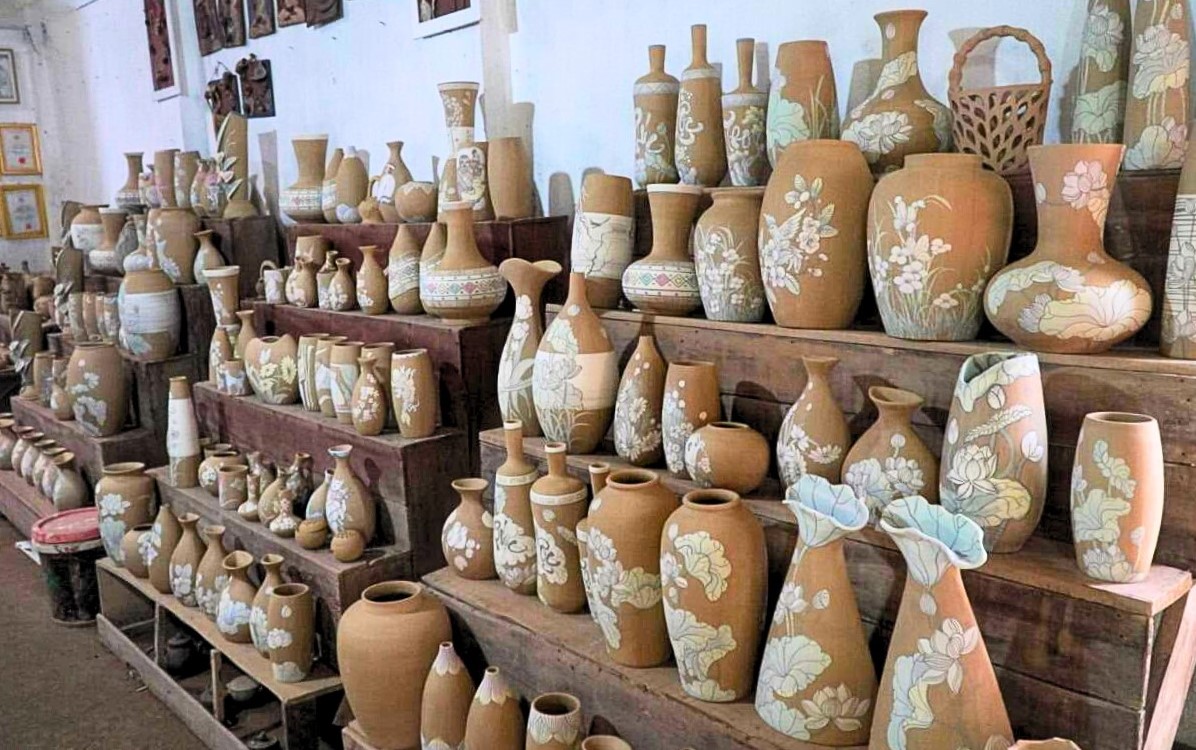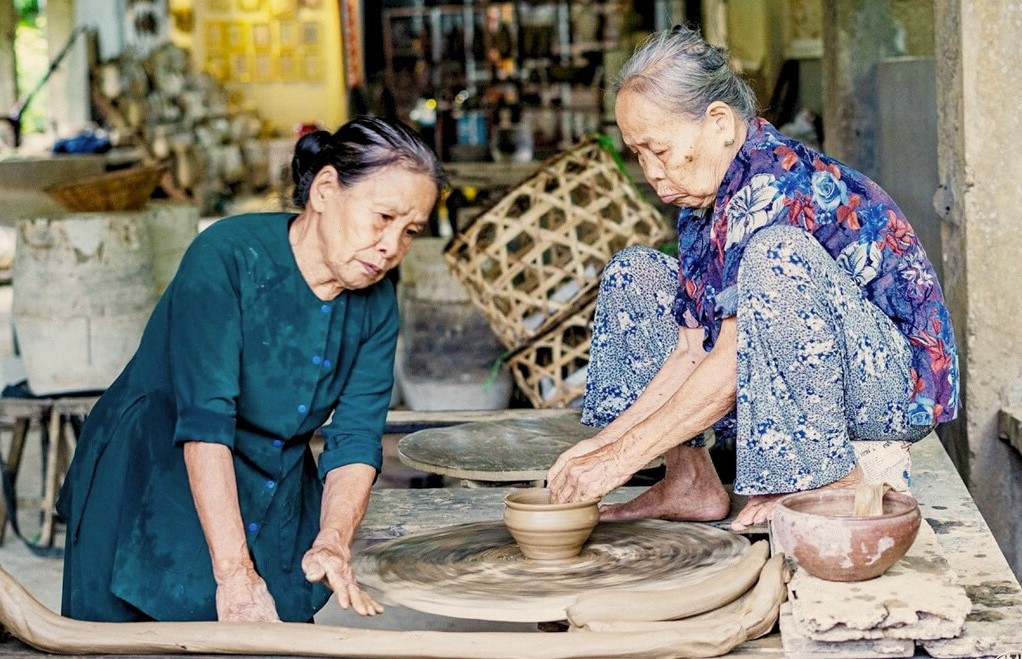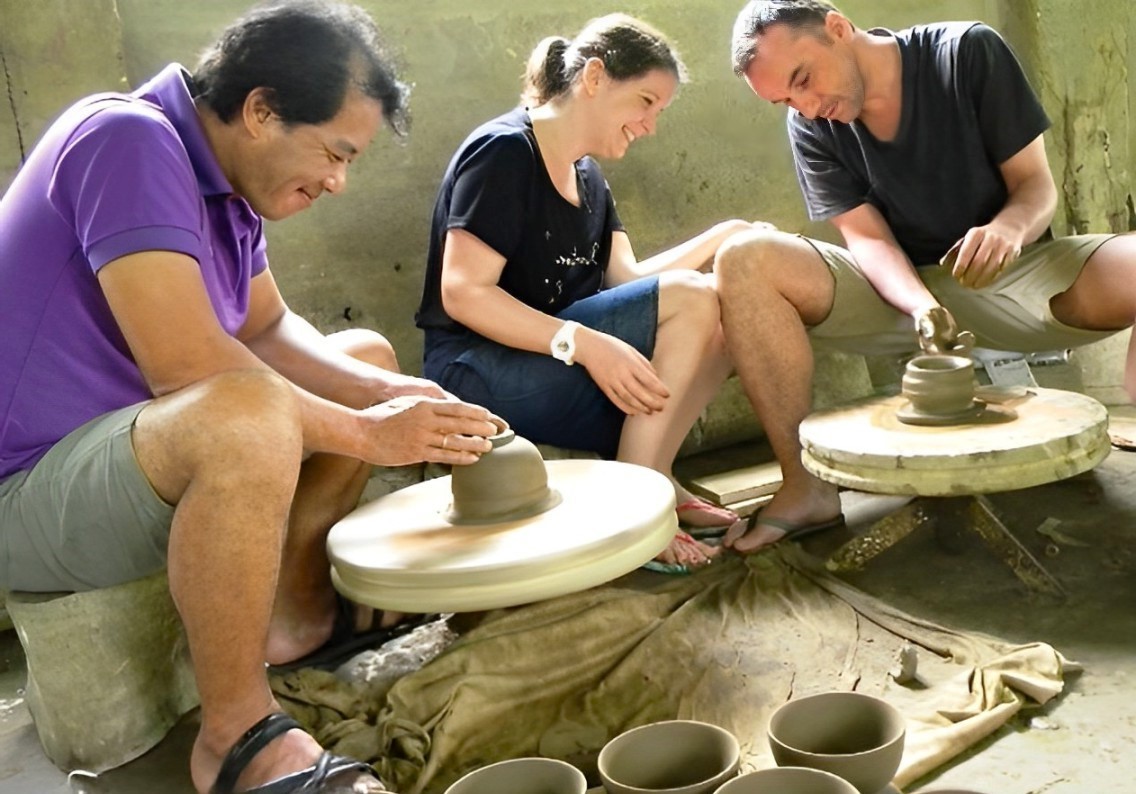Phuoc Tich Pottery Village
Have you ever wondered where Vietnam’s most authentic pottery traditions are still alive today? Welcome to Phuoc Tich Pottery Village, a 500-year-old ceramic haven tucked away in Thua Thien Hue Province. This comprehensive guide will take you through everything you need to know about this remarkable destination, from its rich history to practical visitor tips.
What Makes Phuoc Tich Pottery Village Special?
Phuoc Tich Pottery Village stands out as one of Vietnam’s last remaining traditional pottery centers where ancient techniques meet modern creativity. Unlike commercialized tourist spots, this village maintains its authentic charm with local artisans who’ve inherited their craft through generations.

Located just 40 kilometers northwest of Hue City, this traditional pottery village offers visitors an immersive experience into Vietnam’s ceramic heritage. The village specializes in creating household items, decorative pieces, and architectural elements using time-honored methods passed down since the 16th century.
The Rich History of Phuoc Tich Ceramic Craft
Dating back to the reign of King Le Thanh Tong (1460-1497), Phuoc Tich’s pottery tradition began when skilled craftsmen from Thanh Hoa Province migrated south. They discovered the area’s exceptional clay deposits along the O Lau River, perfect for creating high-quality ceramics.
“The clay from Phuoc Tich has a unique mineral composition that gives our pottery its distinctive reddish-brown color and exceptional durability,” explains master potter Nguyen Van Duc, whose family has been crafting pottery for seven generations.
During the Nguyen Dynasty (1802-1945), Phuoc Tich potters received royal commissions to create ceramics for the Imperial City. This prestigious connection elevated the village’s status and refined their techniques, establishing standards that continue today.
Traditional Pottery Making Process: A Step-by-Step Guide
Understanding the traditional pottery making process helps visitors appreciate the skill and patience required for each piece. Here’s how Phuoc Tich artisans create their masterpieces:
1. Clay Preparation
The process begins with extracting clay from the O Lau riverbed. Artisans mix the clay with water and let it settle for several days, removing impurities. The refined clay is then kneaded extensively to achieve the perfect consistency.
2. Shaping on the Potter’s Wheel
Using traditional foot-powered wheels, potters shape the clay into various forms. This technique requires years of practice to master the precise movements needed for consistent results.
3. Drying and First Firing
Shaped pieces dry naturally for 2-3 days before the first firing at 800°C. This initial firing, called “bisque firing,” hardens the clay while maintaining porosity for glazing.
4. Glazing and Decoration
Artisans apply traditional glazes made from local materials, including ash from rice husks and bamboo. Decorative patterns often feature dragons, phoenixes, and floral motifs significant in Vietnamese culture.
5. Final Firing
The final firing at temperatures reaching 1,200°C transforms the glazed pottery into durable, water-resistant ceramics. Traditional wood-fired kilns give Phuoc Tich pottery its characteristic finish.
What to See and Do in Phuoc Tich Village
Your visit to Phuoc Tich Pottery Village offers numerous engaging activities:
- Workshop Tours: Visit family-run workshops where artisans demonstrate traditional techniques. Most workshops welcome visitors and explain their processes in detail.
- Hands-on Pottery Classes: Try your hand at the potter’s wheel under expert guidance. Sessions typically last 1-2 hours and include clay, instruction, and firing of your creation.
- Ancient Architecture Tour: Explore well-preserved traditional houses, some dating back 200 years, showcasing Hue’s distinctive architectural style.
- Pottery Shopping: Purchase authentic handmade ceramics directly from artisans at fair prices, supporting the local economy.
- Photography Opportunities: Capture stunning images of traditional kilns, artisans at work, and the picturesque village landscape.

Comparing Phuoc Tich with Other Vietnamese Pottery Villages
To help you understand Phuoc Tich’s unique position among Vietnam’s ceramic centers, here’s a detailed comparison:
| Feature | Phuoc Tich | Bat Trang (Hanoi) | Bien Hoa (Dong Nai) |
|---|---|---|---|
| Established | 15th century | 14th century | 17th century |
| Specialty | Traditional household items, architectural ceramics | Fine porcelain, decorative items | Large jars, industrial ceramics |
| Tourist Development | Minimal, authentic experience | Highly developed, commercialized | Moderate development |
| Production Scale | Small-scale, family workshops | Large-scale, industrial and traditional | Medium to large scale |
| Price Range | Affordable to moderate | Wide range, tourist prices | Moderate to expensive |
Practical Visitor Information
Getting to Phuoc Tich Village
Reaching Phuoc Tich Pottery Village from Hue City is straightforward:
- By Motorbike: Rent a motorbike in Hue (150,000-200,000 VND/day) and follow Highway 49 northwest for approximately 40km. The journey takes about 1.5 hours.
- By Taxi: Arrange a round-trip taxi for approximately 800,000-1,000,000 VND, including waiting time.
- By Tour: Join organized tours from Hue combining Phuoc Tich with other attractions like Thanh Toan Bridge and local markets.
- By Private Car: Hire a car with driver for maximum comfort and flexibility (1,200,000-1,500,000 VND/day).
Best Time to Visit
The ideal time to explore Phuoc Tich is during the dry season (March to August) when roads are in good condition and outdoor activities are comfortable. Avoid visiting during the rainy season (September to February) as flooding can occasionally affect access.

What to Bring
- Comfortable walking shoes for exploring the village
- Sun protection (hat, sunscreen, sunglasses)
- Camera for capturing the photogenic scenery
- Cash in Vietnamese Dong for purchases and activities
- Light jacket for air-conditioned transport
Supporting Sustainable Tourism in Phuoc Tich
As visitors to this traditional craft village, we play a crucial role in preserving its heritage. Here’s how you can contribute positively:
“Every purchase directly supports our families and helps keep traditional pottery making alive for future generations,” shares artisan Tran Thi Mai, who learned the craft from her grandmother.
Responsible Tourism Practices
- Buy Directly from Artisans: Purchase pottery from workshop owners rather than intermediaries to ensure fair compensation.
- Respect Workshop Rules: Ask permission before photographing artisans and their work spaces.
- Participate in Workshops: Paid pottery classes provide income while preserving traditional techniques.
- Share Responsibly: Promote the village on social media while respecting local privacy and customs.
- Minimize Environmental Impact: Take your trash with you and respect the natural environment.
Combining Phuoc Tich with Other Hue Attractions
Maximize your Hue experience by combining Phuoc Tich with nearby attractions:
- Hue Imperial City: Explore Vietnam’s former royal capital (morning visit recommended)
- Thien Mu Pagoda: Visit Hue’s iconic seven-story pagoda overlooking the Perfume River
- Royal Tombs: Discover elaborate mausoleums of Nguyen Dynasty emperors
- Dong Ba Market: Experience local life at Hue’s largest traditional market
- Perfume River Cruise: Enjoy a scenic boat ride at sunset
Where to Stay Near Phuoc Tich Village
While Phuoc Tich itself has limited accommodation, nearby options include:
In Hue City (40km away)
- Luxury Hotels: La Residence, Azerai La Residence, Pilgrimage Village
- Mid-range Options: Hue Serene Palace, EMM Hotel, Romance Hotel
- Budget Accommodations: Hue Backpackers, Freedom Hostel, Amy Hotel
Countryside Homestays
For an authentic experience, consider homestays in nearby villages offering insight into rural Vietnamese life. Contact SamTour Vietnam for homestay recommendations and bookings.
Expert Tips for Pottery Shopping
Make informed purchases with these insider tips:
- Check Quality: Tap ceramics gently – a clear ring indicates good quality without cracks
- Understand Pricing: Simple bowls start at 20,000 VND; elaborate pieces can reach 500,000 VND
- Ask About Shipping: Many workshops offer international shipping for large purchases
- Learn the Stories: Each design has cultural significance – ask artisans about symbolism
- Buy Seasonal Items: Special pieces are created for Tet and other festivals
Frequently Asked Questions
Is English spoken in Phuoc Tich Village?
While most artisans speak limited English, younger family members often help translate. Consider hiring a guide for deeper cultural insights.
Can children participate in pottery workshops?
Yes! Workshops welcome children aged 6 and above, with special instruction adapted for young learners.
How long should I spend in Phuoc Tich?
Allow 3-4 hours for a comprehensive visit including workshop tours, pottery making, and shopping.
Are credit cards accepted?
Most workshops only accept cash. ATMs are available in Hue City but not in the village.
Conclusion: Preserving Vietnam’s Ceramic Heritage
Phuoc Tich Pottery Village offers more than just beautiful ceramics – it provides a window into Vietnam’s living cultural heritage. As traditional crafts face challenges from modernization, your visit supports artisan families maintaining centuries-old techniques.
Whether you’re seeking authentic souvenirs, cultural experiences, or simply a peaceful escape from tourist crowds, Phuoc Tich delivers an unforgettable journey into Vietnam’s artistic soul. Plan your visit today and become part of the story helping preserve this remarkable pottery tradition for future generations.
For personalized tours to Phuoc Tich and other hidden gems around Hue, contact SamTour Vietnam’s expert team. We specialize in creating authentic experiences that support local communities while showing you the real Vietnam beyond typical tourist routes.





